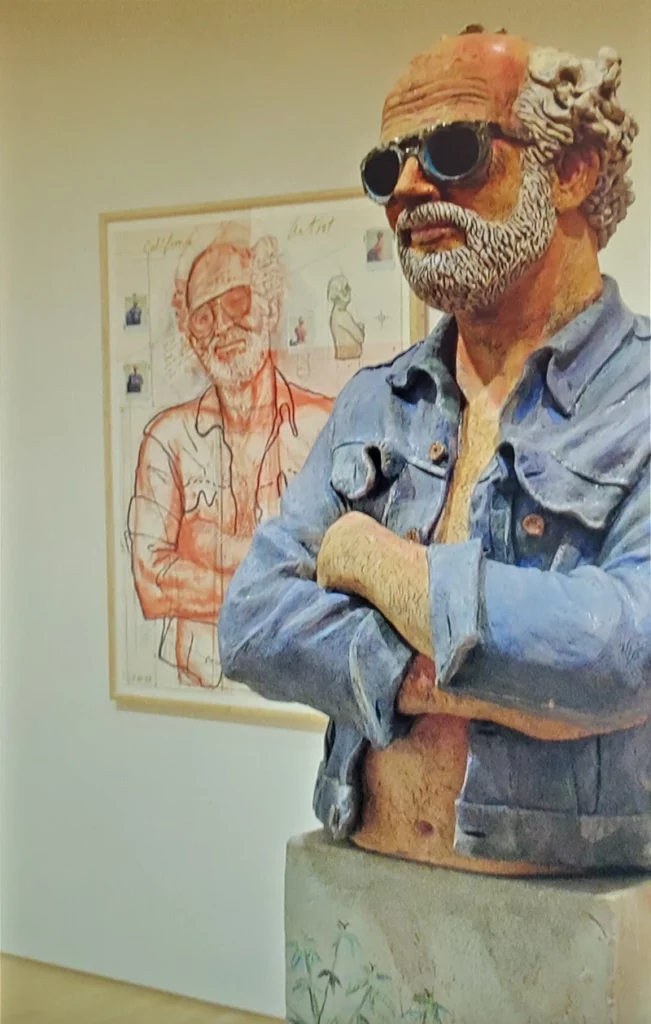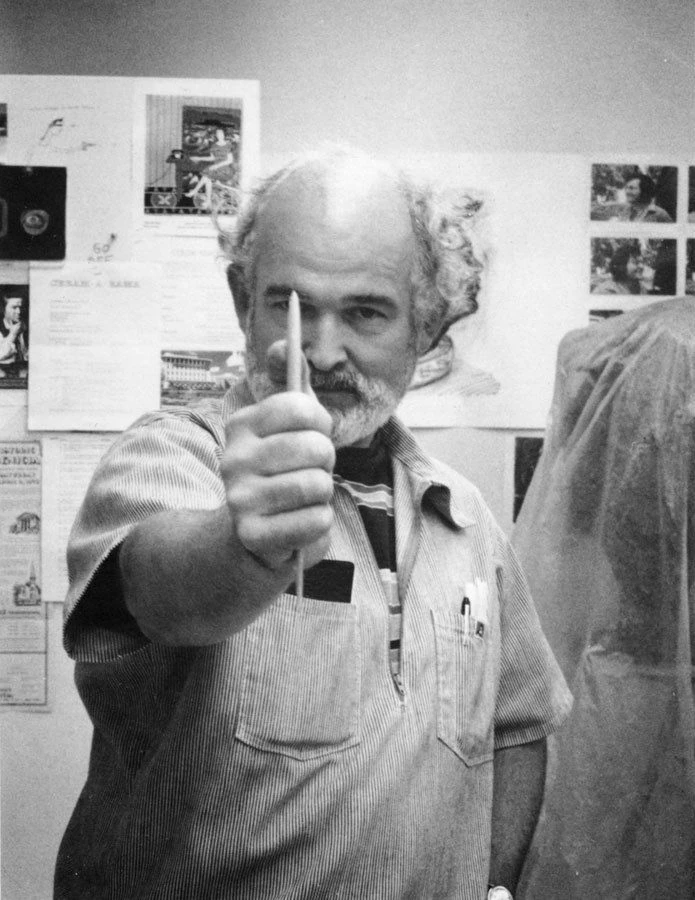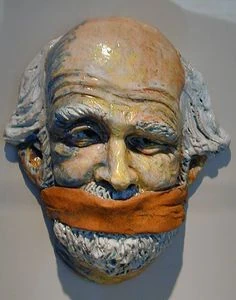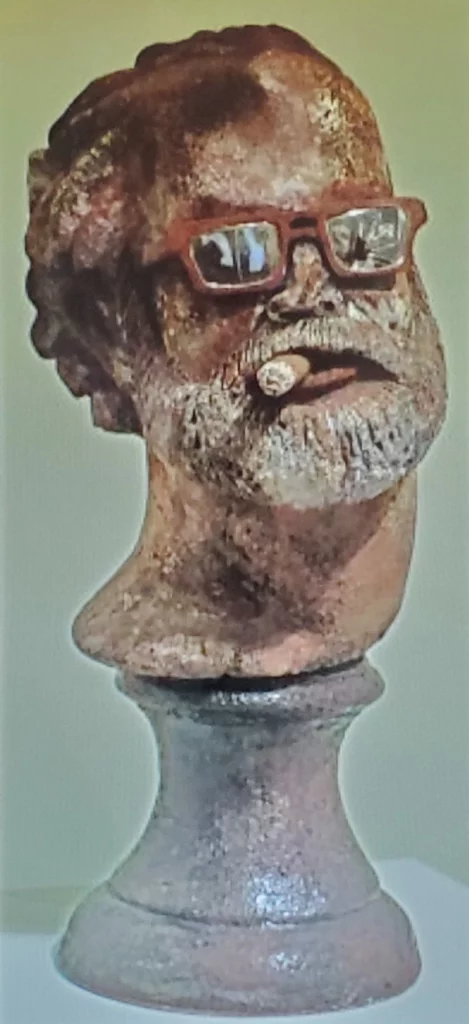Also known as Robert Carston Arneson, was a sculptor and ceramics professor at the University of California, Davis, for nearly three decades. He was born on September 4, 1930, and died on November 2, 1992, in Davis, California, United States.
Robert Carston Arneson (1930 1992) was born on September 4, 1930, in Benicia, California, to Robert Carston Arneson and Margaret Arneson. He graduated from Benicia High School and spent the majority of his early years working as a cartoonist for a local newspaper, which he still does today.
The BFA degree in painting and drawing was earned at The California College of the Arts (now known as Mills College) in Oakland, California, and the MFA degree was earned at Mills College (also in Oakland, California). He received his education from Antonio Prieto while at Mills College.
Robert Arneson Career
Mr. Robert Arneson is widely regarded as the founding father of Funk Art, an anti-establishment movement (pop art) that used found materials, autobiographical subjects, and comedy to create artworks that were defiant of authority.

At the beginning of the 1960s, his early life, Arneson and several other California artists began (using everyday objects) rejecting the customary manufacture of useful ceramic products in favor of creating nonfunctional sculptures (Whimsical Portraits) that made forceful statements (new movement) instead. The new artistic form was named Funk Art, and Arneson is widely regarded as the founder of the ceramic Funk movement in general.

Arneson’s teaching career began shortly after he received his MFA degree, with a position at Santa Rosa Junior College in Santa Rosa, California, where he stayed for a year (1958–1959). From 1959 to 1960, he taught design and crafts at Mills College in Oakland, and from 1960 to 1962, he taught at the University of California, Berkeley.
In 1962, he was appointed as a professor (faculty member) of ceramics at the University of California, Davis. In nearly three decades, he was instrumental in founding the ceramic sculpture department (art department) and advancing the formerly derided medium into the realm of fine art.
As early as 1970, Arneson began experimenting with self-portraiture as a means of probing the nature of the human condition and experience. To him, the ability to “poke fun at myself” was a liberating experience, with his personal image serving as a medium for his work on par with the clay itself. Arneson began his career as a clay artist, creating hilarious self-pictures in which he smoked a cigar, dressed as Santa Claus, or had his fingers up his nose (man picking his nose), jean-jacked hipster, as well as portraits of friends, fellow artists, and politicians. His controversial pieces continue to spark discussion and interest.

Arneson was the one who initiated the ceramic sculpture department at the Art Department at UC Santa Barbara. In many ways, it was a risky and revolutionary decision, given the fact that ceramics was not yet widely acknowledged as a fine art media suitable for exhibition at the time. A corrugated metal building known as TB-9 on the UC Davis campus has served as the studio’s home from its inception, and it was here that Arneson held court for nearly three decades, until his retirement in the summer of 1991.
Robert Arneson Style

His Eggheads series (among his last works), a collection of odd sculptures of faces that he erected around the UC Davis campus, is possibly his most well-known work.
Even his massive Egghead sculptures have a striking similarity to himself. Five Eggheads (famous sculptures) were put on the UC Davis campus in 1994, and they were among the last pieces Arneson completed before his death in 1992. In addition to generating attention and conversation on campus, the provocative posts served as inspiration for the creation of a college blog with the same name. In San Francisco, two new copies of Eggheads have been erected.
His corpus of work includes numerous self-portraits, which have been referred to as “an autobiography in clay” by critics. Doyen, a self-portrait by the artist from 1972 that is now in the collection of the Honolulu Museum of Art, is an example of the artist’s hilariously caricatured self-portraits that he is known for.
George Moscone, the former mayor of San Francisco who was slain in 1978, is represented with a bust by Arneson, which is both famous and divisive in the art world. The words “Bang Bang Bang Bang Bang,” “Twinkies,” and “Harvey Milk Too!” are visible on the front of the pedestal, which represents events in Moscone’s life, including his assassination. The words “Bang Bang Bang Bang Bang,” “Twinkies,” and “Harvey Milk Too!” are visible on the back of the pedestal, which represents his death.
Robert Arneson Legacy

In 1992, Arneson died of liver cancer (long battle) in his hometown of Benicia, California, and his works (Arneson’s fame) can be found in major museums and galleries around the world, including the Chicago Art Institute, the Hirshhorn Museum and Sculpture Garden in Washington, D.C., the Metropolitan Museum of Art in New York, and the Smithsonian American Art Museum in Washington, D.C.
The Art Institute of Chicago, the Virginia Museum of Fine Arts (Richmond, Virginia), the Hirshhorn Museum and Sculpture Garden (Washington, DC), di Rosa (Napa, California), the Honolulu Museum of Art, the Metropolitan Museum of Art (New York City), the San Francisco Museum of Modern Art, the Racine Art Musuem, and the Racine Art Museum are among the many institutions that have acquired his work. His works can also be found at the Lowe Art Museum in Coral Gables, Florida, where he lived.
The Nelson Gallery at the University of California, Davis, where Arneson taught, has 70 of the artist’s works. The 70-square-foot (6.5-square-meter of his former Davis residence) earthenware sculpture, which depicts his previous Davis mansion, is one of his most well-known works and is considered among one of his famous sculptures. Additionally, the library features several of his etchings and lithographs.
Together Arneson and Jensen had four sons. His second wife was to artist Sandra Lynne Shannonhouse.They were married in 1973 until his death in 1992. His artwork can be found in private collections around the world in addition to museums.
Museums

Berkeley Art Museum
The Berkeley Art Museum and Pacific Film Archive is a University of California, Berkeley-affiliated art museum, repertory movie theater, and archive. Lawrence Rinder served as Director from 2008 to August 2020, when he was succeeded by Julie Rodrigues Widholm. Through the end of the 1960s, Robert Arneson’s work remained experimental and his subject matter broad, with inclusion in a number of significant shows, including the Berkeley Art Museum’s Funk display.
The Contemporary Museum
The Contemporary Museum, Honolulu, Robert’s work, Solo Exhibition “This Head is Mine”. The Honolulu Contemporary Museum has been renamed the Honolulu Museum of Art Spalding House and is now part of the Honolulu Museum of Art. It was the state of Hawaii’s only museum dedicated only to modern art.
Stedelijk Museum
Throughout his career, Arneson exhibited worldwide and is widely regarded as a pivotal figure in the re-consideration of ceramics as a sculptural media. His work can be seen in the Stedelijk Museum’s collections. The Stedelijk Museum Amsterdam, or simply the Stedelijk, is a museum in Amsterdam, Netherlands, dedicated to modern and contemporary art and design.
Oakland Museum of California
Throughout his career, Arneson exhibited worldwide and is widely regarded as a pivotal figure in the re-consideration of ceramics as a sculptural media. His work can be seen in the Oakland Museum of California. The Oakland Museum of California houses artifacts and interactive exhibitions concentrating on state art, history, and science in a modern building.
Des Moines Art Center
The Des Moines Art Center is a museum in Des Moines, Iowa, that houses a large collection of paintings, sculpture, modern art, and mixed media. It was founded in Des Moines, Iowa, in 1948.
Yale University Art Gallery
The Yale University Art Gallery is the Western Hemisphere’s oldest university art museum. It is housed in multiple interconnected buildings on the Yale University campus in New Haven, Connecticut, and houses a vast encyclopedic collection of art.
George Adams Gallery
George Adams Gallery is a contemporary art gallery in New York City’s Chelsea area, which was founded in 1952 by George Adams. George Adams joined the Allan Frumkin Gallery in 1980 and became a partner, forming the Frumkin/Adams Gallery, in 1988.
Los Angeles County Museum of Art
Throughout his career, Arneson exhibited worldwide and is widely regarded as a pivotal figure in the re-consideration of ceramics as a sculptural media. His work can be seen in the Los Angeles County Museum of Art. The Los Angeles County Museum of Art is a public art museum in Los Angeles, California, that is located on Wilshire Boulevard in the Miracle Mile neighborhood. The Los Angeles County Museum of Art is located on Museum Row, next to the La Brea Tar Pits. The Los Angeles County Museum of Art (LACMA) was established in 1961 after a split from the Los Angeles Museum of History, Science, and Art.
Cantor Art Center – Iris & B. Gerald Cantor Center for Visual Arts
Located on the campus of Stanford University in Stanford, California, the Iris & B. Gerald Cantor Center for Visual Arts at Stanford University, formerly known as the Stanford University Museum of Art, and more commonly referred to as the Cantor Arts Center, is an art museum dedicated to the visual arts.
Whitney Museum of American Art
The Whitney Museum of American Art, also known as “The Whitney,” is an art museum in New York City’s Meatpacking District and West Village areas. It was founded in 1886 by William Whitney and is the largest museum of American art in the world. In 1930, Gertrude Vanderbilt Whitney, a wealthy and influential American socialite and art supporter, founded the Whitney Museum of American Art in New York City, which bears her name.
Images pinterest = Robert Arneson





